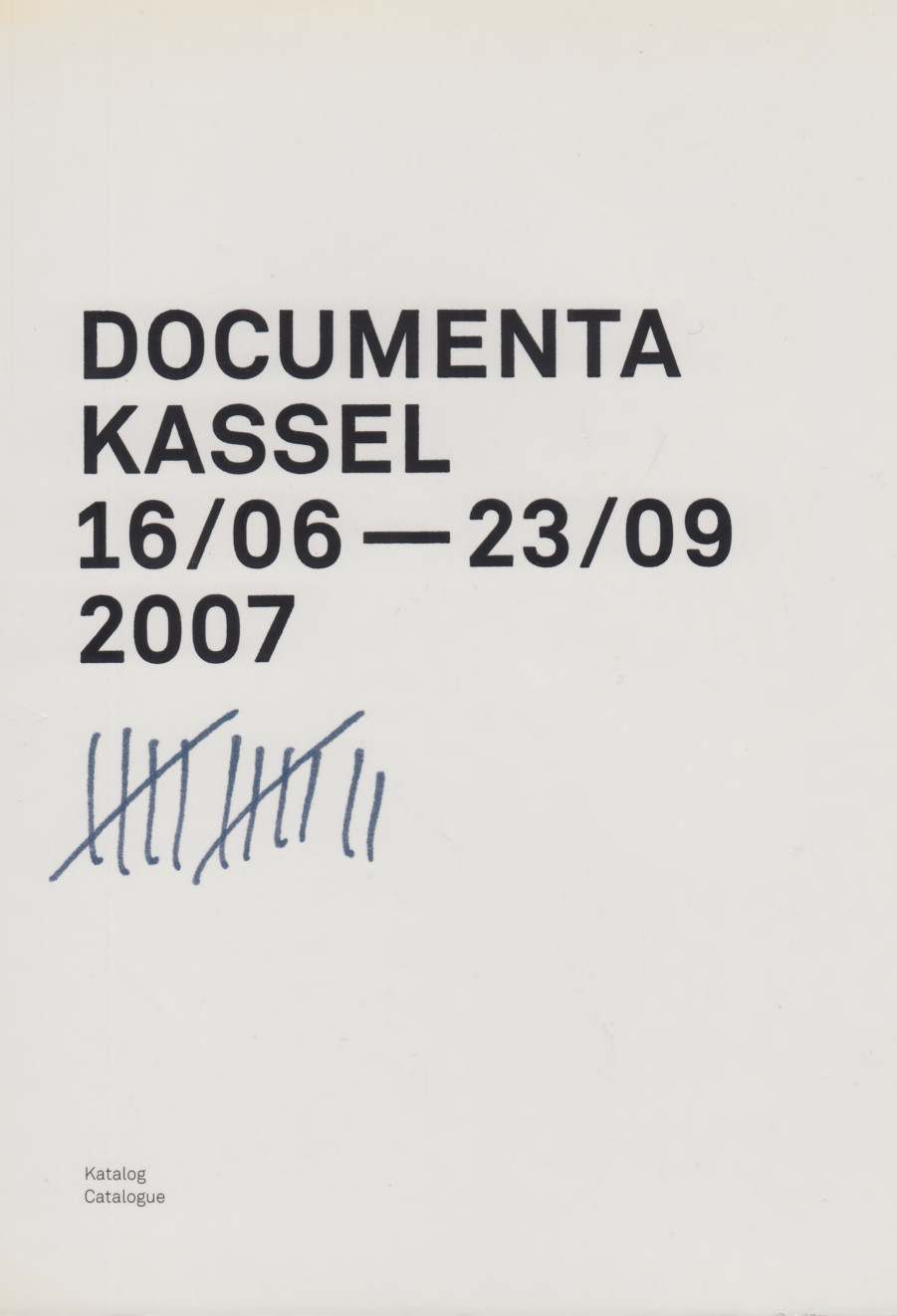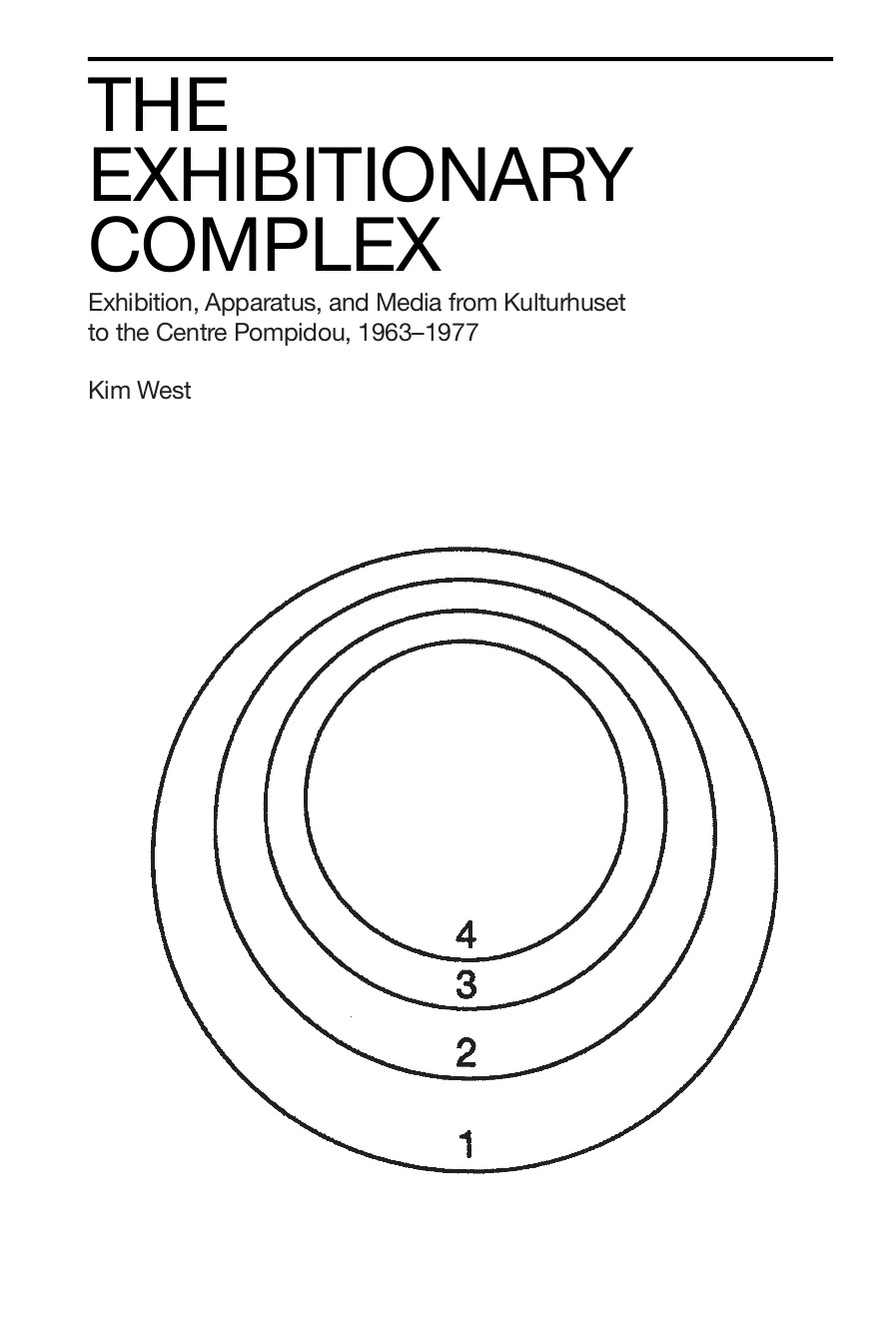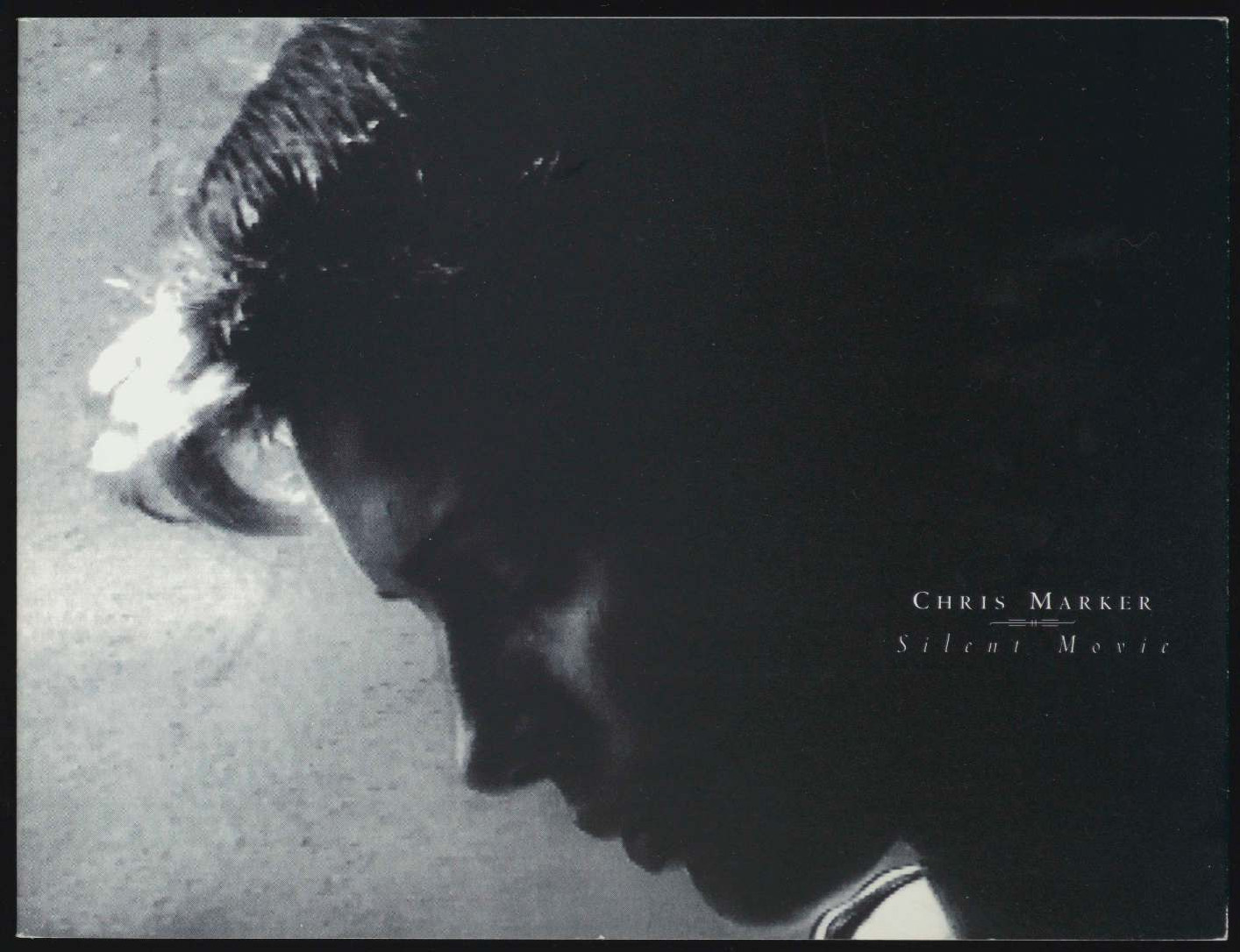documenta 12 (2007) [German/English]
Filed under catalogue | Tags: · art, contemporary art, form, migration

“For the first time in the history of the documenta, the major event in Kassel was organized under the direction of a couple: Roger M. Buergel as the designated art director and Ruth Noack as curator. They served only “unofficially” as a two-member directorial team, however, as the documenta statutes do not allow for the possibility of two co-directors. Together, they developed a clearly defined programmatic concept under the banner of “The Migration of Forms.” What that meant was that, over the course of human history, visual culture has had only a limited number of basic forms with which to work—forms that have been used in different contexts and with different conceptual focuses throughout the history of art. Buergel/Noack pointed out that “contemporary does not mean that the works originated yesterday. They must be meaningful for people today. Documenta 12 is concerned with both historical lines of development in art and unexpected concurrences.” In order to bring these “unexpected concurrences” to light, relationships were established between works of art from different decades and cultures in which similar formal patterns have emerged—a process that has led to a “migration” of aesthetic forms across temporal and cultural boundaries culminating in the art of our postmodern world. This formalism was emphasized in the Neue Galerie by walls painted different colors. In turn, this focus on the phenomenon of migration resulted in the selection of a high percentage of artists from Africa, Asia, and Eastern Europe. New to the program was the inclusion of old art, from fourteenthcentury Persian miniatures to global art from recent decades. Artists already long since recognized in their own homelands, such as Nasreen Mohamedi, for example, were not the only ones presented to a broad public in Germany for the first time. The works of several exemplary artists—John McCracken, Kerry James Marshall, Charlotte Poseneske, and Gerwald Rockenschaub—also migrated through all exhibition venues.” (Source)
Publisher Taschen, Cologne, 2007
ISBN 9783836500524, 3836500523
415 pages
via x
PDF (148 MB, no OCR)
Comment (0)Kim West: The Exhibitionary Complex: Exhibition, Apparatus and Media from Kulturhuset to the Centre Pompidou, 1963-1977 (2017)
Filed under thesis | Tags: · aesthetics, apparatus, art history, exhibition, information, media, museum, networks, theory

This doctoral thesis “studies the new Information Center model of the art museum that was developed by a group of artists, curators, architects, and activists connected to Moderna Museet in Stockholm between the mid-1960s and the mid-1970s. Through close readings of Moderna Museet’s unrealized Kulturhuset project, and a series of related attempts at rethinking the exhibition and the museum in relation to new information technologies, systems, and networks, it traces the origins, the critical implications, and the effects of this model, according to which the museum should function at once as a catalyst for the active forces in society, a vast experimental laboratory, and a broadcasting station.
In this study, the museum is understood as an exhibitionary apparatus, the specific characteristics of which are configured in relation to other apparatuses for display, distribution, and interaction, which together form an exhibitionary complex, caught in a process of gradual integration with the expanding network of cybernetic media. The study asks under what conditions the exhibitionary apparatus might preserve its particular modes of social and aesthetic experience, while acting as a transformative force on and through the new information environments.”
PhD dissertation in Aesthetics, School of Culture and Education, Södertörn University
Publisher Södertörn University, Stockholm, 2017
Open access
ISBN 9789187843761
359 pages
Review: Anders Kreuger (Kunstkritikk, 2017).
Comment (0)Chris Marker: Silent Movie (1995)
Filed under artist publishing, catalogue | Tags: · cinema, film, film history, silent cinema, silent film

In Silent Movie, “Marker employs five-channels of video, each a thematic exploration of early cinema. Film images disclosing ‘The Journey,’ ‘The Face,’ ‘The Gesture,’ and ‘The Waltz’ occupy four of the monitors while on the fifth (and middle) monitor is a collection of ninety-four silent-era intertitles, ‘telling short, mysterious pieces of unknown stories.’ These moving images travel through a computer interface that assembles an ever-changing array of sequences. At any given moment, each passage is in unique juxtaposition with the other images passing across the surrounding monitors. Coloration, tone, and association are governed by chance contiguities; even the intertitles narrate across a field of fluid relationships.” (Source)
“Silent Movie. To give an installation the name of something that never existed is probably less innocent than the average cat may infer. There was never anything like silent cinema, except at the very beginning, or in film libraries, or when the pianist had caught a bad flu. There was at least a pianist, and soon an orchestra, next the Wurlitzer, and what contraptions did they use, in the day of my childhood, to play regularly the same tunes to accompany the same film? I’m probably one of the last earthlings–the ‘last,’ says the cat–to remember what themes came with what films: ‘A Midsummer Night’s Dream’ on Wings (the dogfights), Liszt’s ‘The Preludes’ on Ben Hur. A touch of humour noir here, to think that the saga of the young hebrew prince was adorned by Hitler’s favorite music, which in turn explains why you hear it more often than Wagner on the German war newsreels–but I get carried away. …”–Chris Marker (book page 15)
Edited by Ann Bremner
Publisher Wexner Center for the Arts, Ohio State University, Columbus/OH, 1995
ISBN 1881390101
40 pages
via MoMA
PDF
Video excerpt (8 min)

